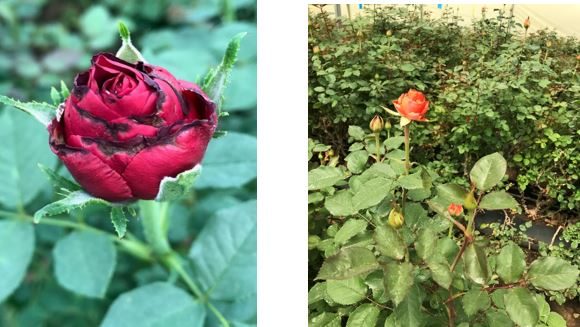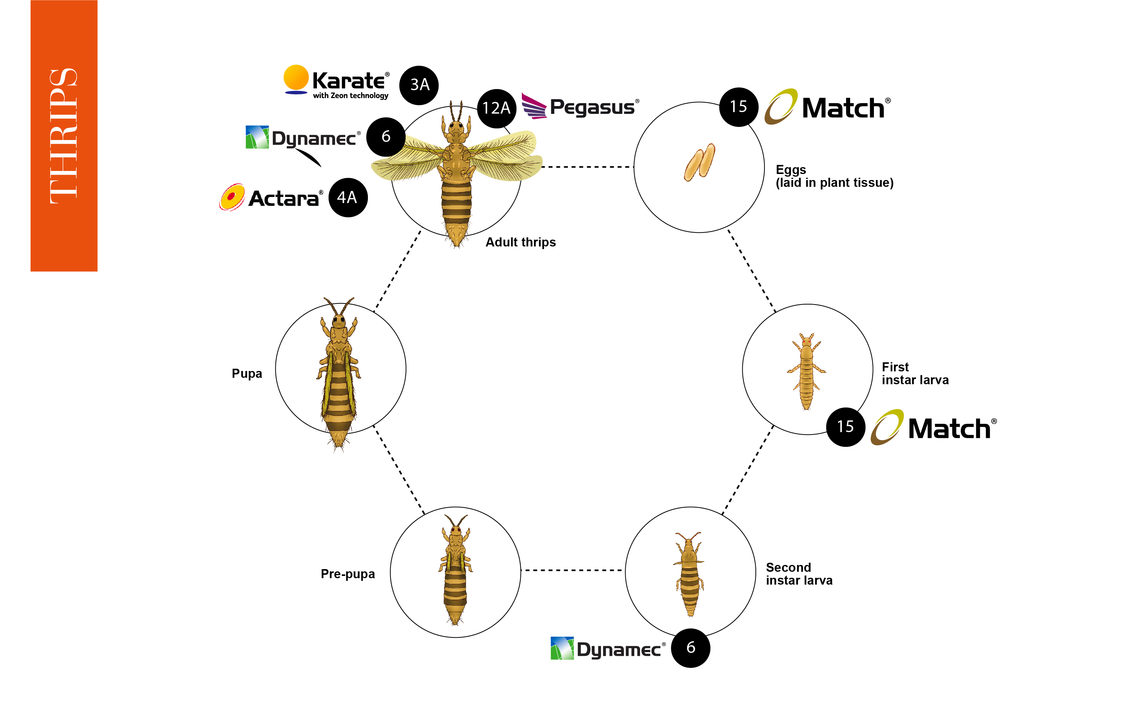Watch out for thrips on your farm
Thrips, order Thysanoptera, are tiny, slender insects with fringed wings. They feed by puncturing the epidermal (outer) layer of host tissue and sucking out the cell contents, which results in stippling, discolored flecking, or silvering of the leaf surface.
Thrips feeding is usually accompanied by black varnishlike flecks of frass (excrement). Pest species are plant feeders that discolor and scar leaf, flower, and fruit surfaces, and distort plant parts or vector plant pathogens. Many species of thrips feed on fungal spores and pollen and are often innocuous. However, pollen feeding on plants such as orchids and African violets can leave unsightly pollen deposits and may reduce flower longevity. Certain thrips are beneficial predators that feed on other insects and mites. Thrips can readily move long distances floating with the wind or transported on infested plants, and exotic species are periodically introduced.

Identification
Most adult thrips are elongate, slender, minute (less than 1/20 inch long), and have long fringes on the margins of both pairs of their long, narrow wings. Immatures (called larvae or nymphs) are oblong or slender and elongate and lack wings. Most thrips range in color from translucent white or yellowish to dark brown or black. A few species are brightly colored, such as the distinctive reddish-orange larvae of the predatory thrips, Franklinothrips orizabensis and F. vespiformis. Feeding results in various tissue responses, including scar formation and distorted growth. Behavior, body appearance, and host plants help to distinguish among thrips species. It is more important to distinguish among thrips species in situations where integrated pest management methods are used. For example, each species of natural enemy preys on and helps to control only certain species of thrips or other pests. Certain thrips occur on many different plants but damage only a few of the plant species on which they are found. Identifying the species of thrips may reveal that it is harmless in certain situations and no control action is needed.
Life cycle

Thrips hatch from an egg and develop through two actively feeding larval stages and two nonfeeding stages, the prepupa and pupa, before becoming an adult. Late-instar larvae change greatly in appearance and behavior and are called prepupae and pupae, even though thrips do not have a true pupal stage.
Females of most plant-feeding species lay their elongate, cylindrical to kidney-shaped eggs on or into leaves, buds, or other locations where larvae feed. The pale prepupae and pupae of most species drop to the soil or leaf litter or lodge within plant crevices or galls. Greenhouse thrips pupate openly on lower leaf surfaces; while pupae (and eggs) of some gall-making species, such as Cuban laurel thrips and myoporum thrips, occur on leaf surfaces but are enclosed within distorted plant tissue. Thrips have several generations (up to about eight) a year. When the weather is warm, the life cycle from egg to adult may be completed in as short a time as 2 weeks.
Damage
Western flower thrips is primarily a pest of herbaceous plants; but high populations can damage flowers on woody plants, such as roses. Rose petals may develop dark streaks and spots from feeding injury that occurred before the buds opened, or the flower buds may deform and fail to open. Western flower thrips also vectors Impatiens necrotic spot virus and Tomato spotted wilt virus, which can severely damage or kill certain vegetable crops and herbaceous ornamentals.
Thrips feeding can stunt plant growth and cause damaged leaves to become papery and distorted, develop tiny pale spots (stippling), and drop prematurely. Infested terminals may discolor and become rolled. Petals may exhibit "colour break", which is pale or dark discoloring of petal tissue that was killed by thrips feeding before buds opened. On some plants thrips can cause severe stunting to the early season flush of terminal growth.
Management
Thrips are difficult to control. If management is necessary, use an integrated program that combines the use of good cultural practices, natural enemies, and the most selective or least-toxic insecticides that are effective in that situation.
Chemical control recommendations
Actara, Dynamec, Karate Zeon, Match and Pegasus.
